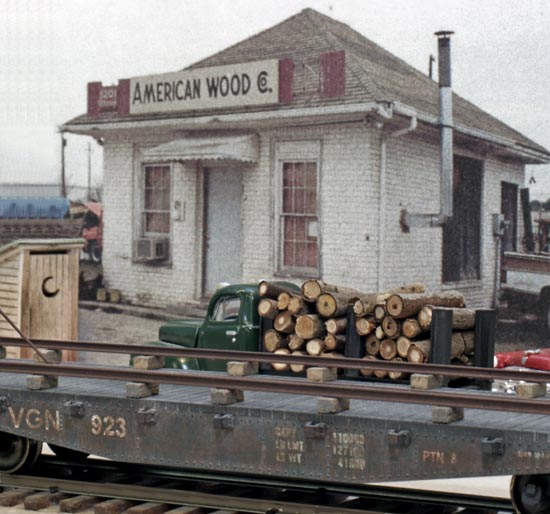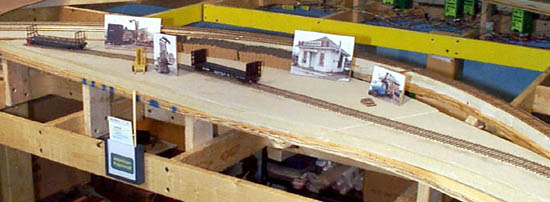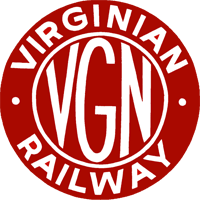Eggleston is home to American Pulpwood Co., a small operation which supplies wood to be ground into pulp for making paper. Trees are cut in nearby forests, then the branches are removed and the trunks cut into short logs, which are brought to Eggleston on trucks. A special fork lift transfers the logs from the trucks to pulpwood flatcars.

Below is what Eggleston really looks like on the layout; the photo above is a combination of a background picture and models. The spur can hold up to five pulpwood cars, but usually there will be only three or four; empties are stored at the far end of the track. Cars are loaded from both sides, so the track near the black car is kept clear for the fork lift to cross. When a car is fully loaded, the fork lift pushes it out of the way and drags another empty from storage.

I'm very pleased with this simple siding. Eggleston is just east of Pepper, where the original design had a turntable and steam locomotive servicing facility in the same area. But the extra trackwork was confusing, and the pulpwood facility was relegated to a one-car spur on the opposite side of the track. That would have been difficult to switch, and not very convincing as a significant industry.
This track arrangement elevates American Pulpwood to a real business, not an extra spur that was forced into a tiny space for the sake of adding another industry. Even with just a single siding, the facility looks "right." There is enough space for the fork lift to operate - unloading trucks and loading pulpwood cars. Plus, there's additional space for stacks of pulpwood waiting to be loaded, and an office.
Eggleston is a good example of the axiom, "Simpler is better."
